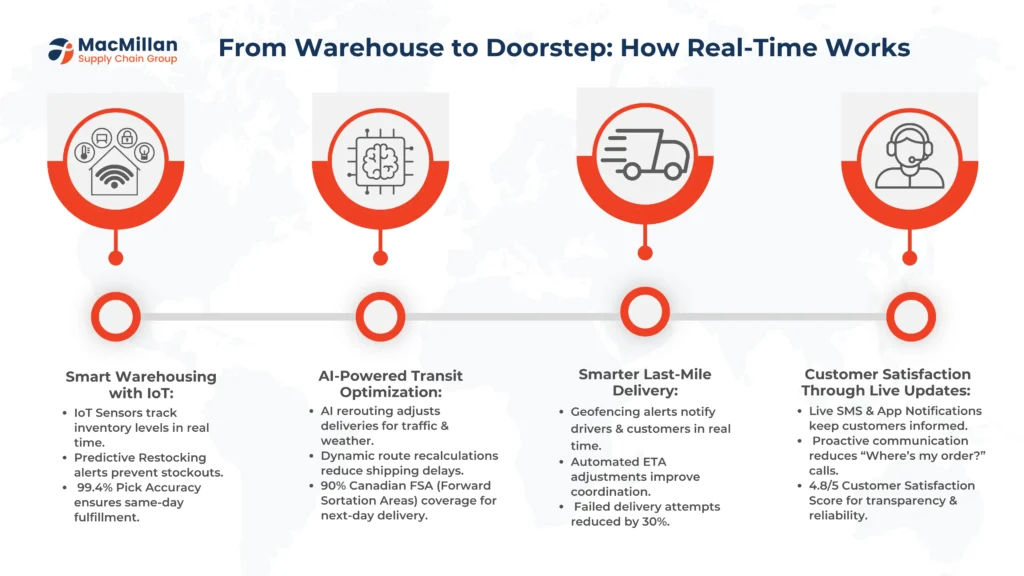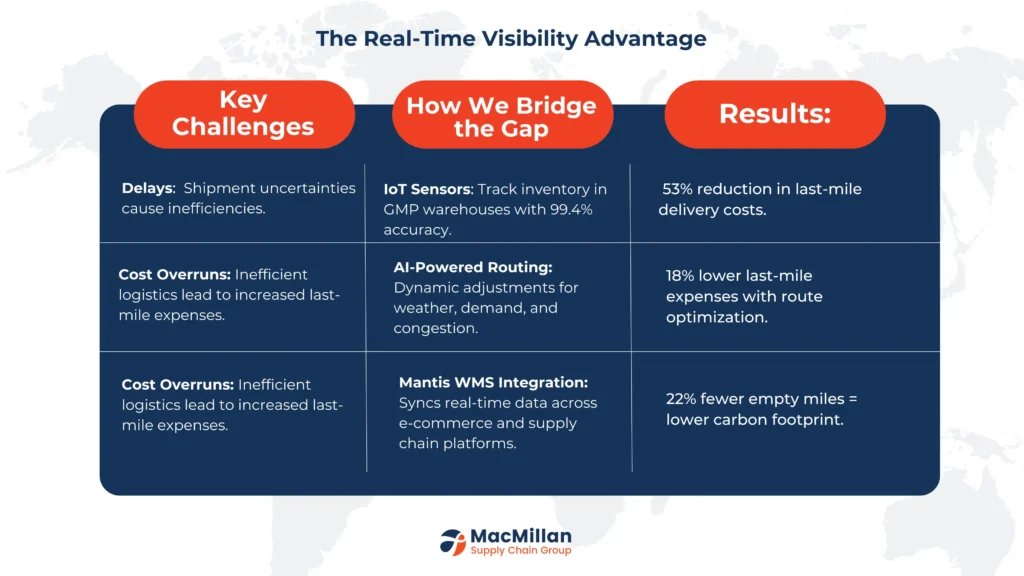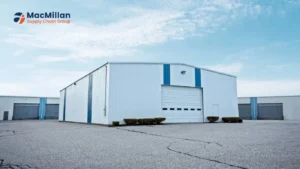A Brief Summary and Overview
Cross border fulfillment is revolutionizing the global expansion of e-commerce companies. Businesses can handle difficult international shipping laws, Canadian customs clearance, and quick delivery to customers throughout the world by collaborating with third party logistics providers (3PLs). 3PLs provide specialized services including multi node distribution networks, technology-driven solutions that optimize the entire fulfillment process, and warehousing in major regions like British Columbia and Ontario. Through effective, affordable logistics solutions, the ideal 3PL collaboration eliminates obstacles to international trade while preserving customer satisfaction for Canadian companies seeking to expand overseas or US companies entering the Canadian market.
Overview
Global boundaries have been erased by the e-commerce industry, giving companies previously impossible chances to connect with clients abroad. However, logistics, customs laws, and satisfying customers’ demands for prompt delivery present serious obstacles when selling goods internationally, especially between the US and Canada.
This is where third-party logistics companies (3PLs) and cross-border fulfillment become crucial allies in your international e-commerce growth. By managing everything from warehousing to customs clearance in Canada, a professional 3PL can simplify complex international shipping procedures.
Knowing how 3PLs facilitate cross-border trade is essential for businesses trying to enter the Canadian market or for Canadian businesses growing internationally. Let’s examine how these logistics professionals can assist you in navigating global waters and expanding your online store internationally.
How 3PLs Simplify Cross-Border Shipping in Canada
Sending parcels from point A to point B is only one part of shipping goods across international borders.In spite of possible delays at border crossings, it involves organizing customs paperwork, understanding complicated procedures, and guaranteeing on-time delivery.
For e-commerce companies, third-party logistics companies are excellent at streamlining these procedures. They know the ins and outs of cross border transportation in Canada and have built-up connections with customs officers. Because of their experience, they can transfer your things quickly and with the least amount of hassle.
Working with a 3PL that specializes in shipping from the US to Canada gives you access to their well-established infrastructure as well. In order to put your products closer to your Canadian clients, this includes strategically positioned warehouses in Ontario and other important Canadian provinces.
The advantages go beyond the infrastructure itself. 3PLs use advanced tracking systems that provide you real time visibility into your shipments as they travel across international boundaries. You can proactively handle any problems that may occur during transit and keep clients updated on their orders thanks to this transparency.
Furthermore, 3PLs manage every piece of complex paperwork involved in overseas transportation, such as tax filing, duty computations, and customs documents. This knowledge guarantees compliance to rules while averting expensive delays that can affect client satisfaction.
Strategic Warehousing: The Foundation of Effective Cross Border Fulfillment
One of the most significant advantages of working with a third party logistics provider is access to their network of fulfillment warehouses. For cross border e-commerce between the US and Canada, having inventory stored in strategic locations dramatically improves delivery times and reduces shipping costs.
A fulfillment warehouse in Ontario serves as an ideal hub for serving the densely populated regions of Eastern Canada. Orders can be swiftly processed and dispatched from this central location to key markets like Toronto, Montreal, and Ottawa, usually arriving the following day. The delays that come with crossing the border for each individual order are eliminated because of this close proximity.
In the same way, British Columbia warehouses offer great access to markets in Western Canada and act as a gateway for trade with the Pacific. No matter where your clients are situated, 3PLs maximize delivery times by distributing inventory across several key sites, forming a multi-node distribution network.
Additionally, these storage options provide flexibility. When order volumes increase during peak seasons, 3PLs can set aside more space to handle higher inventory levels. Your company can satisfy seasonal demand thanks to this scalability without having to invest in permanent warehouse space that can be largely empty during slower times.
Automated warehouse systems that accelerate order processing are another element of modern fulfillment warehouses. Conveyor belts, sophisticated picking systems, and sorting technologies guarantee precise and effective order fulfillment, cutting down on the time between order placing and shipment.

Technology Driven International Logistics Solutions
The backbone of effective cross border fulfillment is technology. The most successful 3PLs of today use advanced systems which communicate with your e-commerce platform, ensuring a smooth information flow from the time a consumer places an order till it is delivered to their door.
Real-time inventory management across several warehouse sites is made possible by 3PL technology integration.Strategic inventory placement based on regional demand patterns is made possible by this visibility, which also helps to avoid stockouts.The program automatically chooses the optimum fulfillment center for a customer’s order based on factors like inventory availability, delivery schedules, and shipping distance.
Proactive inventory management is made possible by AI-driven shipment projections that help forecast changes in demand. Businesses with seasonal products or those running marketing initiatives that could cause unexpected spikes in order volume will find these predictive analytics very useful.
Order management systems provide picking lists, packing guidelines, and shipping labels automatically, streamlining the fulfillment process. Orders are filled precisely and quickly thanks to this technology, which also cuts down on processing time and human error.
For cross border shipments, technology plays a crucial role in customs clearance. Advanced systems prepare and submit customs documentation electronically, speeding up the clearance process. Real time tracking allows both you and your customers to monitor shipments as they move through customs and toward their final destination.
Navigating Customs Clearance and Compliance Challenges
Navigating the complex web of customs laws, taxes, and charges is arguably the most difficult part of cross-border e-commerce. This is where companies growing into foreign markets find that specific 3PL knowledge is extremely helpful.
In Canada, clearing customs includes a number of requirements, such as exact valuation, country of origin documentation, correct classification of commodities, and adherence to various trade agreements. Errors in any of these areas may result in penalties, unforeseen expenses, or even delays in shipments.
Customs laws and requirements are kept updated by third-party logistics companies that specialize in cross-border fulfillment. They reduce the possibility of delays at the border by making sure that all required paperwork is accurately prepared and presented on time.
3PLs help businesses that sell regulated goods like food, cosmetics, or electronics in navigating additional compliance requirements particular to these industries. They make sure your shipments adhere to all relevant standards and are aware of the certification and labeling requirements for various product categories.
Customs brokerage services are provided by most 3PLs as a component of their cross-border shipping packages. These services include creating customs entries, calculating and collecting taxes and duties, and speaking on your company’s behalf while dealing with customs officials. 3PLs manage these complicated processes so you may concentrate on expanding your company rather than getting bogged down in legal jargon.
Common Problems with Cross-Border Fulfillment
Even though international e-commerce offers many advantages, companies nonetheless encounter a number of difficulties when delivering internationally:
- Unexpected Customs Delays: Incomplete paperwork, wrong product classification, or periodic checks can cause shipments to be delayed at the border. Customers become unhappy and your brand’s reputation is harmed by these delays.
- Complicated Duty and Tax Calculations: Duty rates and tax obligations vary depending on the product. Errors can result in unforeseen expenses that reduce your profit margins or, if passed on after a purchase, negatively impact the customer experience.
- Outrageous International Shipping Fees: Compared to domestic delivery, cross-border shipping is always more costly. These expenses may render your items uncompetitive in international markets if you don’t find strategic solutions.
- Inventory Control at Various Locations: It might be difficult to maintain ideal stock levels across foreign warehouses, particularly when real-time inventory status is not visible.
- Processing Returns: Customs regulations, shipping expenses, and logistical difficulties make international returns difficult. Ineffective returns processing might result in unhappy customers and missed revenues.
- Seasonal Volume Fluctuations: Unprepared fulfillment operations may be overwhelmed by the sharp increases in order volume that occur during promotional periods and holiday seasons.
- Compliance with Various Market Regulations: Products may be required to meet different standards or have different labeling depending on the country of destination.

Our Solutions:
How the MacMillan Supply Chain Facilitates the Success of International E-Commerce
The following comprehensive solutions have been developed by MacMillan Supply Chain Group to handle the difficulties associated with cross-border fulfillment, specifically for companies that operate between the US and Canada:
Strategic Multi-Node Distribution Network
Our network of fulfillment warehouses in Ontario, British Columbia, and other strategic locations creates a powerful distribution system that puts your products closer to your customers.This multi-node approach reduces shipping distances, cuts delivery times, and lowers transportation costs.
In order to guarantee that your bestseller products are consistently available close to areas with strong demand, we carefully place your inventory based on sales trends and consumer locations. This strategy reduces the need for individual orders to cross the border, making it especially useful for companies who serve both US and Canadian markets.
Seamless Customs Clearance Procedures
Each aspect of cross-border compliance is managed by our team of customs specialists, from product classification to paperwork preparation. We are able to promptly resolve problems and keep your goods flowing because of our relationships with customs officials on both sides of the US-Canada border.
For businesses new to international shipping, we provide guidance on harmonized system (HS) codes, duty rates, and documentation requirements. Our proactive strategy ensures that your products move across borders smoothly by preventing customs delays before they happen.
Advanced Technology Integration
Our proprietary platform creates a consolidated overview of your inventory, orders, and shipments across all locations by seamlessly integrating with major e-commerce systems. This connectivity gives you full supply chain visibility and allows for real-time decision-making.
To predict demand trends and maximize inventory placement, we use AI-driven shipping projections. Our automated warehouse solutions, such as conveyor networks and robotic picking systems, increase accuracy and speed order processing.
Comprehensive Returns Management
For international purchases, our reverse logistics techniques streamline the returns procedure. From creating return labels to processing merchandise at our facilities and refilling, restoring, or discarding things in accordance with your requirements, we manage all aspects of international returns.
We save time and money for you and your customers by removing the requirement for individual returns to be sent across borders by localizing returns processing within the country of purchase.
Scalable Peak Season Capacity
Our e-commerce peak season management solutions ensure that your fulfillment operations can handle volume spikes during holidays and promotional periods.We keep flexible workforce and warehouse layouts that may be swiftly adjusted to meet fluctuating demand levels.
In order to prepare for seasonal needs and make appropriate preparations, we collaborate with our clients on forecasting sessions as part of our planning process. By taking this preemptive measure, you avoid capacity limitations that would otherwise restrict your ability to make sales at crucial times of high volume.
Sustainable Logistics Practices
We are dedicated to environmentally friendly e-commerce logistics that preserve operational effectiveness. Our efforts include energy-efficient warehouse buildings, appropriately sized packaging to minimize waste, and improved routing to lower fuel consumption.
We provide carbon-neutral shipping choices and thorough reporting on environmental parameters for companies with sustainability objectives. In addition to helping the environment, these actions also appeal to customers who are becoming more environmentally concerned.
How to Implement Cross-Border Fulfillment with MacMillan Supply Chain
Ready to expand your e-commerce business across borders? Here’s how to get started with MacMillan Supply Chain Group:
- Evaluation and Planning: We start by carefully examining your present business practices, product attributes, and target markets. We can determine the best fulfillment plan for your unique requirements with the help of this assessment.
- Custom Solution Design: We create a customized cross-border fulfillment solution that takes into account your particular possibilities and difficulties based on our assessment. This covers planning for technology integration, choosing a warehouse location, and developing customs compliance plans.
- Seamless Implementation: Our skilled staff oversees the transition process, guaranteeing that your ongoing business activities are not severely disrupted. We take care of system integrations, inventory transfers, and employee training to ensure the seamless operation of your cross-border fulfillment.
- Continuous Optimization: After implementation, we keep an eye on performance indicators and tweak as needed to boost productivity, cut expenses, and improve customer satisfaction.
Don’t let logistics barriers limit your global growth potential. Partner with MacMillan Supply Chain Group to transform your cross-border fulfillment operations and unlock new international markets. Our proficiency in international logistics, customs clearance in Canada, and shipping from the United States to Canada gives you all you need to be successful in international e-commerce.
Get in touch with our staff right now to find out how our 3PL services for Canadian e-commerce will help you achieve your company’s growth objectives. We are prepared to assist you in effectively and consistently reaching clients anywhere in the world with our well-located fulfillment centers in Ontario and across North America.
FAQS
Cross-border fulfillment involves storing inventory and shipping orders to customers in different countries. Unlike standard domestic fulfillment, it requires navigating customs regulations, international shipping carriers, duty calculations, and compliance with foreign market requirements. A specialized third-party logistics provider manages these complexities, allowing your business to sell internationally without building in-house expertise in global shipping compliance.
A 3PL with cross-border expertise can establish a US-based fulfillment operation for your Canadian business, allowing you to ship domestically within the US. This approach eliminates customs delays for your US customers, reduces shipping costs, and shortens delivery times. The 3PL handles all aspects of US compliance, including tax considerations, product regulations, and shipping requirements, making your expansion seamless.
An Ontario-based fulfillment center provides strategic access to Canada's most populous regions while maintaining proximity to major US markets. This location enables faster delivery to Canadian customers, eliminates per-order customs processing, reduces shipping costs, and simplifies compliance with Canadian regulations. For US businesses, it's an ideal entry point into the Canadian market without establishing their own physical presence.
Professional 3PLs manage the entire customs clearance process, including preparing and submitting documentation, calculating duties and taxes, ensuring proper product classification, and addressing any customs inquiries. They leverage electronic data interchange (EDI) connections with customs authorities to expedite clearance and maintain compliance with programs like the Customs Self-Assessment (CSA) to minimize delays at the border.
Advanced 3PLs offer seamless integration with major e-commerce platforms (Shopify, WooCommerce, Amazon), order management systems, and inventory management software. These integrations provide real-time visibility of inventory across locations, automated order routing, customs documentation preparation, and shipment tracking. Look for 3PLs that offer API connectivity, EDI capabilities, and web-based reporting dashboards.
Multi-node distribution places your inventory in strategic locations across different regions or countries, allowing orders to be fulfilled from the warehouse closest to the customer. This approach reduces shipping distances, lowers transportation costs, speeds up delivery times, and minimizes cross-border shipping for individual orders. It's particularly effective for businesses with customers spread across multiple geographic regions
With strategic warehousing and proper customs preparation, standard cross-border delivery between the US and Canada typically takes 2-5 business days. However, when using a 3PL with fulfillment warehouses in both countries, delivery times can be reduced to 1-2 days for many destinations, as individual orders don't need to cross the border. Expedited services can further reduce these timeframes for time-sensitive shipments.
3PLs implement comprehensive reverse logistics strategies for international returns, including providing return labels, processing incoming packages, inspecting returned items, and handling restocking or disposal. By maintaining return processing facilities in the customer's country, 3PLs eliminate the need for individual returns to cross borders, simplifying the process and reducing costs for both merchants and customers.
Leading 3PLs are adopting numerous sustainable e-commerce logistics practices, including optimized routing to reduce fuel consumption, right-sized packaging to minimize waste, energy-efficient warehouse operations, and carbon offset programs. Some offer consolidated shipping options that combine multiple orders into fewer shipments, reducing the overall carbon footprint of cross-border fulfillment operations.
AI and machine learning algorithms analyze historical sales data, seasonal trends, promotional calendars, and market indicators to predict future order volumes and patterns. These AI-driven shipping forecasts help 3PLs optimize inventory placement across international warehouses, plan staffing levels, arrange transportation capacity, and prepare customs documentation in advance. The result is more efficient operations, reduced costs, and faster delivery times for cross-border shipments.




